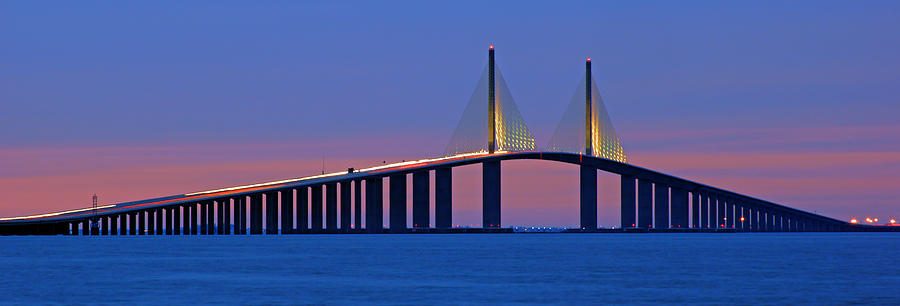Me too, and my comment wasn't a reflection on any of his other work (I haven't seen it). It was just a long video that didn't have any conclusions beyond (as I said) two options, options that are blindingly obvious to most people regardless of any interest or aptitude in engineering: it was built wrong or designed wrong.
And as I was trying to point out; the conclusions aren't the point. The ability to figure out what went wrong and the specifics of what went wrong are. The discussion of the finer points of the interplay of concrete and steel material properties are probably interesting to people not well versed in them. The idea that structures almost always undergo significant design changes during construction is probably news to many non-engineers, and the importance of taking your time to redo all the calculations and reprove your safety factors is lost even on many qualified engineers.
When time is short and cost is a factor it's a lot easier to eyeball something and call it good than send everyone home for the day while you do math. It happens more than you'd think, mostly because most of the time the original designed safety factors are sufficient to deal with it. But this was worse, we know that at least one major crack was noted and as AvE points out the fact that all materials have some level of elasticity means that there will have been other signs that the bridge was stressed near failure to a trained observer.
That the lead engineer noted a crack and dismissed it is a huge red flag. It's possible to have concrete cracking without structural problems, but I'd love to see the presentation that was delivered to convince the other managers that it wasn't an issue. Not to mention that having the road open underneath while performing tensioning is asking for trouble, if there's going to be a failure it's going to be when you're stressing the structure. Closing the road for a few hours or even a day or two is not a massive deal. And ideally you'd want to have the tensioning done to a distance rather than to a load, that way it shows up if your steel or any other part of the structure is faulty if you can't reach the prescribed load within the allowable tensioning distance.
See, I feel like the videos raised a lot of interesting things to consider. I'm not sure how you only manage to take away that someone messed up. It's not about the end point but the journey, we already know someone messed up before clicking the link. I feel like AvE did a decent job of discussing what might have gone wrong based on the information available, why those particular things are a problem and what reasoning he used to come to those conclusions.
That the bridge was built wrong or designed wrong was a given from the moment it fell over, what is interesting is looking into how it was built or designed wrong. Perhaps that's not of interest to you and therefore all you see in the video is what feels like a very obvious conclusion. All I can do is assure you that people who do scientific or engineering work that has the potential to injure or kill people get very into this sort of stuff.
Hell, as someone who was very,
very lucky not to have anyone injured as a result of one of my scientific misjudgements barely a month ago, I take this sort of thing incredibly seriously. That incident scared the bejeesus out of me, because I could have accidentally killed up to four people. It would have been extremely unlikely, but totally possible. These are people that I work with, know and like. :censored:ing terrifying. I didn't sleep for a couple of days after that thinking of all the things I did wrong.
This is part of engineering, if you get stuff wrong then people can die. And so it's good to look at incidents like this bridge collapse and start treating it as though it were one of your own projects. What went wrong? How should you have prevented that in hindsight? Were there opportunities to see this coming? Can you go through every choice that you made in design and justify it?
That's how I look at those videos, but I suspect I'm in a minority. Most people don't build things that have real potential to injure or kill.
Better start using a more tighter factor of safety...
Meh. Just calculate the safety factors correctly to start with and redo them properly when design changes are made. Using a safety factor of 8 instead of 4 doesn't make a design any safer if the only reason you're using 8 is to account for people that aren't doing their calculations properly. Safety factors are there to account for variation in materials and load in normal usage. They still assume that the structure was built more or less as designed, and so if the structure is not you might as well throw the entire safety factor out the window.
The Hyatt Regency collapse is a decent example.
https://en.wikipedia.org/wiki/Hyatt_Regency_walkway_collapse
Ignoring the fact that the thing was pretty poorly designed from the outset, a design change made the whole thing into a teetering Jenga tower ready to fall at the slightest provocation. This because the designer never really finished the initial design, then approved changes during construction without any attempt to evaluate the effect of those changes.
You'd need a safety factor of like 20 simply to account for that sort of incompetence. If you try to apply that to everyone, at that point you're pretty much requiring all engineers to be incompetent in order to get a project under cost. A good engineer that does his designs and calculations correctly doesn't need overblown safety factors to protect from incompetence, it's assumed that someone designing this sort of stuff should be a.) competent and b.) smart enough to have another competent colleague double check their work.
If not, we can all hope that someone notices that they're an idiot before they get far enough to build something like the Hyatt Regency walkway or the FIU bridge. Unfortunately, there's always a few that slip past.





